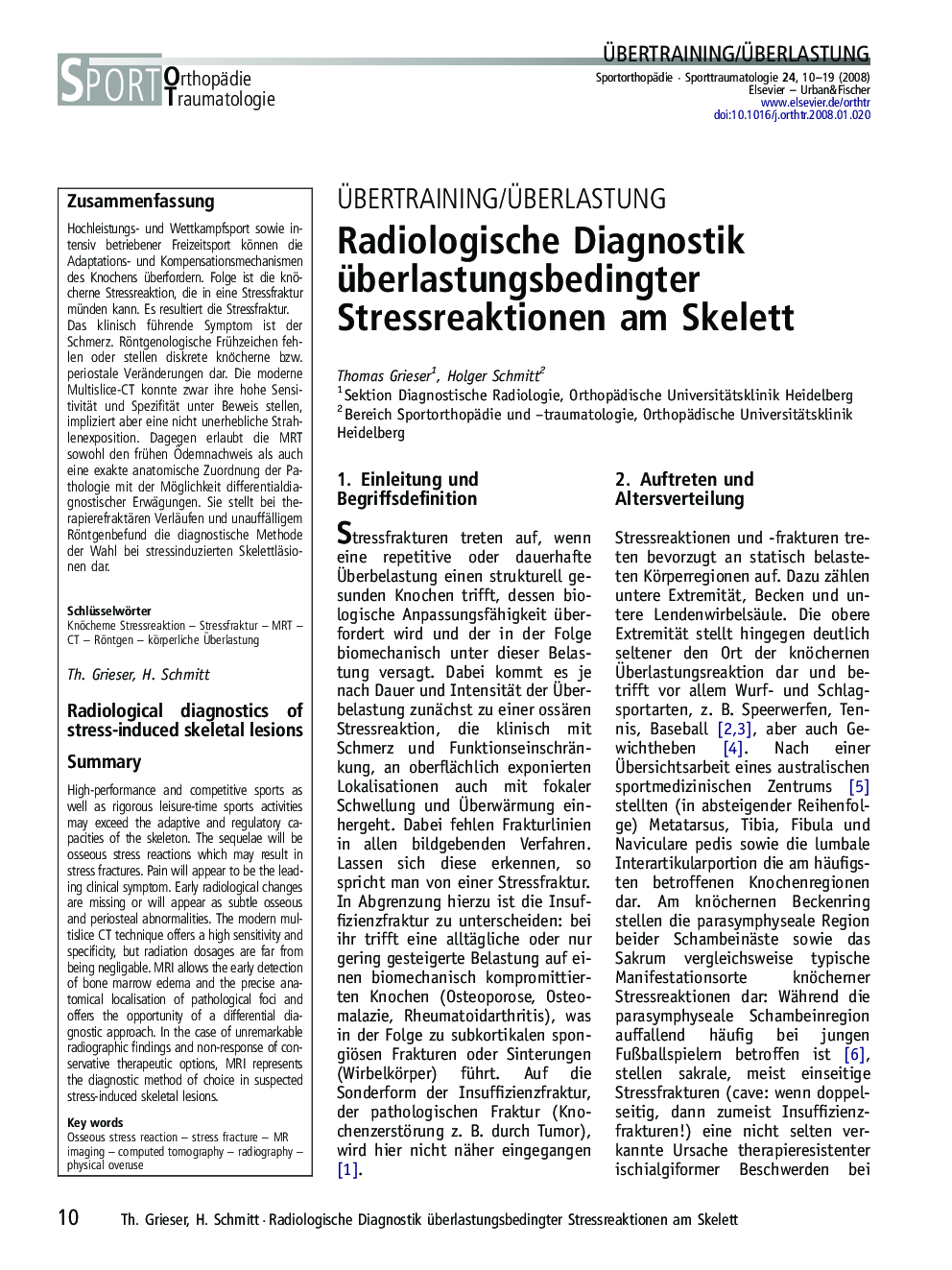| Article ID | Journal | Published Year | Pages | File Type |
|---|---|---|---|---|
| 2741198 | Sports Orthopaedics and Traumatology | 2008 | 10 Pages |
ZusammenfassungHochleistungs- und Wettkampfsport sowie intensiv betriebener Freizeitsport können die Adaptations- und Kompensationsmechanismen des Knochens überfordern. Folge ist die knöcherne Stressreaktion, die in eine Stressfraktur münden kann. Es resultiert die Stressfraktur.Das klinisch führende Symptom ist der Schmerz. Röntgenologische Frühzeichen fehlen oder stellen diskrete knöcherne bzw. periostale Veränderungen dar. Die moderne Multislice-CT konnte zwar ihre hohe Sensitivität und Spezifität unter Beweis stellen, impliziert aber eine nicht unerhebliche Strahlenexposition. Dagegen erlaubt die MRT sowohl den frühen Ödemnachweis als auch eine exakte anatomische Zuordnung der Pathologie mit der Möglichkeit differentialdiagnostischer Erwägungen. Sie stellt bei therapierefraktären Verläufen und unauffälligem Röntgenbefund die diagnostische Methode der Wahl bei stressinduzierten Skelettläsionen dar.
SummaryHigh-performance and competitive sports as well as rigorous leisure-time sports activities may exceed the adaptive and regulatory capacities of the skeleton. The sequelae will be osseous stress reactions which may result in stress fractures. Pain will appear to be the leading clinical symptom. Early radiological changes are missing or will appear as subtle osseous and periosteal abnormalities. The modern multislice CT technique offers a high sensitivity and specificity, but radiation dosages are far from being negligable. MRI allows the early detection of bone marrow edema and the precise anatomical localisation of pathological foci and offers the opportunity of a differential diagnostic approach. In the case of unremarkable radiographic findings and non-response of conservative therapeutic options, MRI represents the diagnostic method of choice in suspected stress-induced skeletal lesions.
